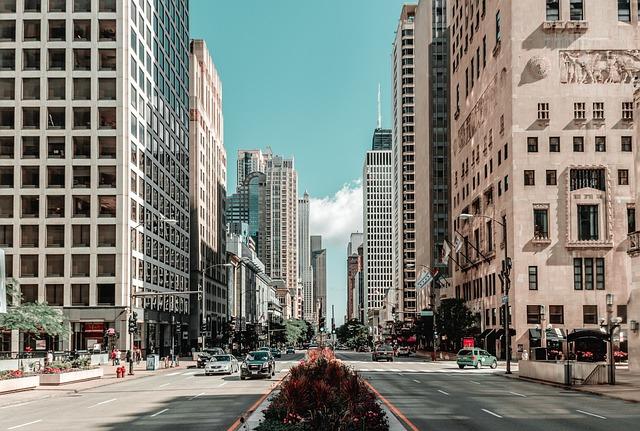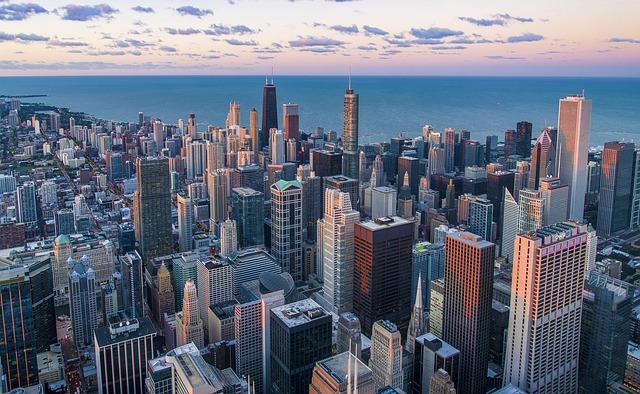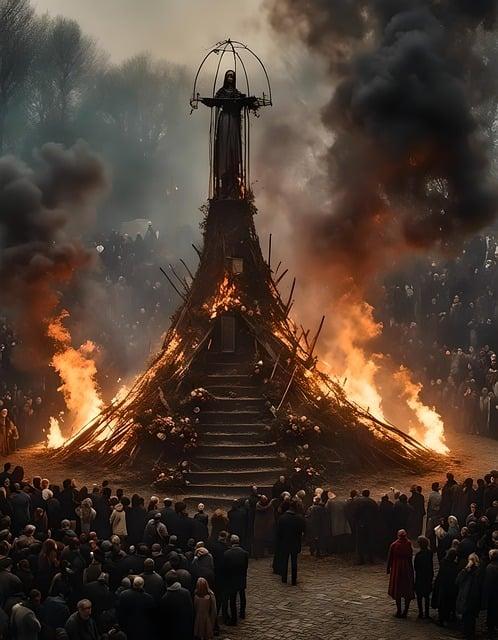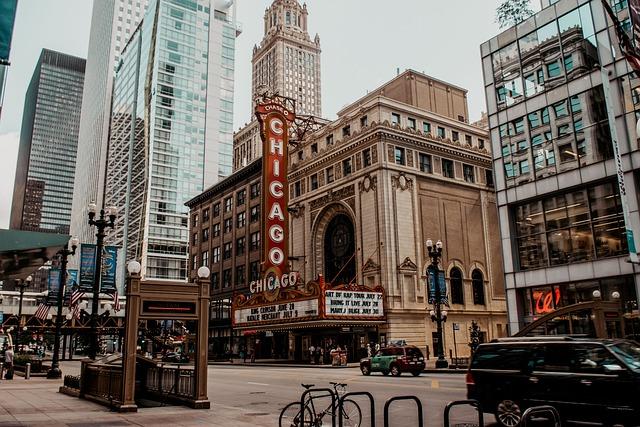Chicago the Musical isn’t just a splash of jazz and razzle-dazzle; it’s a tantalizing tapestry woven from the threads of ambition, betrayal, and the ever-alluring pursuit of fame. Set against the backdrop of the roaring twenties, this iconic musical takes us on a rollercoaster ride through the glitzy yet gritty streets of Chicago, where the glimmer of the spotlight often shadows the darker sides of human nature. But have you ever paused to wonder what makes Chicago tick? What fuels the frenetic energy that keeps audiences tapping their toes and clapping along, even decades after its debut? In this article, we’ll peel back the layers of this extraordinary production, exploring the creative genius of its writers, composers, and performers who turned a gritty tale of crime and charisma into a timeless masterpiece. So, grab your jazz hands and get ready to dive into the fascinating world of Chicago the Musical, where the artistry goes far beyond the stage.
Exploring the Origins and Inspirations of Chicago the Musical
Chicago the Musical bursts onto the stage with a zing and a zap that’s hard to ignore, but have you ever paused to think about its roots? The seeds of this spectacular show were sown as early as the 1920s, when journalist Maurine Dallas Watkins penned a sensational play based on real-life crimes that gripped the city. Inspired by the infamous trials of murderers Beulah Annan and Belva Gaertner, Watkins turned sensationalism into art, delving deep into the twisted glamour of crime and the media frenzy surrounding it. This origin story reflects a society in the throes of change, with a jazz-infused backdrop that perfectly captures the spirit of the Roaring Twenties, an era known for hedonism, flappers, and jazz clubs glowing in the night.
Fast forward to the 1970s, when Bob Fosse’s directorial magic took center stage, reimagining Watkins’ narrative into a revolutionary musical. The explosively vivid choreography, combined with Kander and Ebb’s tantalizing score, crafted a thrilling aesthetic that echoed the very heartbeats of jazz and corruption. In this reinvention, the characters became more than mere victims; they morphed into antiheroes who danced their way through a morally ambiguous world. Fosse’s vision breathed life into themes of fame and manipulation, igniting conversations about the American media landscape that remain pertinent today. The show not only made waves for its daring performances but also for its deep-rooted commentary on celebrity culture and the lengths one will go to achieve notoriety.

Character Arcs and Their Impact on the Narrative
In the dazzling world of “Chicago,” character arcs are like the intricate dance steps that propel the narrative forward, creating moments that resonate deeply with the audience. Take Roxie Hart, for instance; she begins as a woman seeking fame at any cost, embodying the flawed vanity within us all. As the story unfolds, her journey transitions from naïve ambition to a more profound understanding of the price of success. This evolution keeps the audience glued to their seats, asking themselves, “What would I do in her shoes?” Each character, from the cunning Velma Kelly to the morally ambiguous lawyer Billy Flynn, intricately intertwines their arcs, showcasing the complexities of ambition, betrayal, and the ever-present hunger for recognition. The show cleverly highlights how personal desires can lead to darker choices, making us ponder the lengths we would go to for our dreams.
The interconnection of these arcs not only shapes the characters but also impacts the thematic undercurrents of the musical. For example, the contrast between Roxie’s and Velma’s journeys sheds light on the shifting dynamics of fame and fortune in a world that often prioritizes sensationalism over morality. Through vibrant musical numbers and clever choreography, we see each character’s transformation unfold in real time. The outcome becomes more than just a storyline; it’s a reflection of the societal values we navigate daily. What happens when the desire for success blinds us to our morals? By weaving these profound messages into the vibrant tapestry of song and dance, “Chicago” captivates audiences with a timeless narrative that feels both fresh and familiar, encouraging introspection long after the curtain falls.

The Role of Music and Choreography in Shaping the Story
In Chicago the Musical, music isn’t just a backdrop; it’s the heartbeat that drives the narrative forward. From the infectious jazz beats to the haunting melodies, each song meticulously unfolds the characters’ desires, fears, and ambitions. Think of the musical numbers as vibrant brushstrokes on a canvas, each one adding depth and dimension to the story. For instance, songs like “All That Jazz” and “Cell Block Tango” serve not only to entertain but also to reveal the gritty realities and moral complexities of the characters’ lives. The rhythm and tempo set the tone, transforming mere dialogue into a compelling emotional experience. Never underestimate the power of a catchy tune—it lingers in the mind long after the curtain falls, making the audience ponder the characters’ choices.
Choreography plays an equally instrumental role in conveying the essence of the story. With every kick, turn, and synchronized movement, the dancers embody the characters’ emotions and conflicts. Just picture the high-energy dance sequences that pulse with life, depicting the sensationalized glamor of the 1920s while juxtaposed against the lurking shadows of crime and corruption. It’s like watching a dynamic painting come to life, where every move tells a story and every gesture amplifies the underlying themes. The choreography in Chicago can be seen as a silent dialogue between the characters, revealing intentions and relationships that words alone might fail to capture. Together, music and movement create an immersive tapestry, pulling the audience into a world where rhythm and storytelling intertwine seamlessly.
Lessons from Chicago for Aspiring Creatives and Performers
Chicago the Musical isn’t just a show; it’s a masterclass in creative storytelling that speaks volumes to anyone trying to carve their path in the arts. One of the biggest takeaways is the importance of bold choices. The creators of Chicago didn’t play it safe; they embraced a style that oozes flair and a hint of danger—a daring move that sets the stage for magic. For aspiring creatives and performers, this means embracing your unique voice and vision, even if it feels a bit daunting. Ask yourself: what elements of your personality or perspective can you amplify in your work? Always remember that authenticity resonates more than perfection.
Another invaluable lesson springs from character development within the narrative. Each role in Chicago is steeped in complexity, revealing the intricate dance between ambition and morality. Aspiring artists can learn from this rich tapestry by delivering multi-dimensional characters that flout stereotypes. Consider how you can create characters that are not just relatable but also challenge the audience’s preconceptions. The essence lies in building a strong backstory and motivations for your characters, which can transform a simple narrative into something profoundly engaging. So, what’s your character’s story? This kind of depth is what keeps audiences coming back for more.

The Way Forward
As we draw the curtain on our exploration of the creative genius behind *Chicago the Musical*, it’s clear that this iconic show is more than just a dazzling display of choreography and catchy tunes. It embodies a rich tapestry woven from the threads of historical context, cultural commentary, and artistic innovation. Just like the city that inspired it, *Chicago* thrives on a blend of grit and glamour, capturing the essence of the Roaring Twenties while echoing timeless themes of ambition, betrayal, and the pursuit of fame.
So, whether you’re a seasoned Broadway aficionado or just someone who loves a good story, remember that Chicago is not merely a musical; it’s a compelling narrative that invites us to look deeper into the worlds of its characters. As the final notes fade and the lights dim, we’re left with more than just a catchy refrain; we carry with us an understanding of the creative forces that shaped a masterpiece still resonating today. Now, go ahead—let the rhythm of Chicago inspire your own creativity, and never stop unraveling the genius around you.



